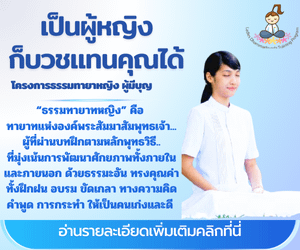พระสัมมาสัมพุทธเจ้าได้ตรัสสอนถึงความไม่แน่นอนและความสำคัญของการไม่ประมาทในชีวิตไว้ว่า “ชีวิตเป็นของน้อย เกิดมายาก ตายง่าย” ซึ่งหมายถึงการมีชีวิตของมนุษย์นั้นเป็นสิ่งล้ำค่าที่เกิดขึ้นได้ยาก และชีวิตนี้เปราะบางต่อความเปลี่ยนแปลงหรือการดับสูญ เราไม่ควรหลงลืมว่าทุกสิ่งล้วนมีความไม่เที่ยง (อนิจจัง) และเต็มไปด้วยความไม่แน่นอน
เปรียบเทียบชีวิต: คำสอนเพื่อเตือนใจ
พระสัมมาสัมพุทธเจ้าได้ทรงยกข้อเปรียบเทียบชีวิตที่สะท้อนความไม่เที่ยงและความน้อยนิดของมัน ดังนี้:
- เปรียบดั่งฟองน้ำในลำธาร
พระพุทธองค์ทรงสอนว่าชีวิตมนุษย์เปรียบเสมือนฟองน้ำในลำธารที่พัดผ่านไปอย่างรวดเร็ว ฟองน้ำเหล่านั้นอาจลอยอยู่ชั่วครู่ แต่ก็แตกสลายไปในเวลาอันสั้น นี่สะท้อนว่าชีวิตเปราะบางและสามารถดับสูญได้ทุกเมื่อ
- เปรียบเสมือนน้ำค้างบนยอดหญ้า
น้ำค้างที่เกาะบนยอดหญ้าในยามเช้า ดูเหมือนจะงดงามและสดชื่น แต่เพียงไม่นานเมื่อแสงอาทิตย์ส่องมา น้ำค้างก็ระเหยหายไป นี่ชี้ให้เห็นว่าชีวิตมนุษย์นั้นสั้นและเต็มไปด้วยความไม่แน่นอน
- เปรียบเหมือนรอยเท้านกในอากาศ
พระพุทธองค์ตรัสว่าชีวิตนั้นเหมือนรอยเท้าของนกที่บินผ่านอากาศ ซึ่งไม่มีร่องรอยใดหลงเหลือไว้ สะท้อนให้เห็นว่าไม่มีสิ่งใดถาวรและคงอยู่ตลอดไป
คำเตือน: อย่าประมาทในชีวิต
ด้วยความจริงเหล่านี้ พระสัมมาสัมพุทธเจ้าจึงสอนให้มนุษย์ “อย่าประมาท” (อัปปมาทะ) และใช้ชีวิตด้วยสติปัญญา ไม่หลงใหลในความเพลิดเพลินที่ไม่จีรัง และมุ่งปฏิบัติธรรมเพื่อพัฒนาจิตใจและพ้นจากทุกข์
การตระหนักว่าชีวิตเป็นสิ่งล้ำค่าและเกิดมาเพื่อการสร้างประโยชน์ ไม่เพียงทำให้เรารู้คุณค่าของการใช้เวลา แต่ยังช่วยให้เราดำเนินชีวิตอย่างมีเป้าหมายที่มั่นคง โดยยึดหลักธรรมและความไม่ประมาทเป็นเข็มทิศ
ดังคำตรัสของพระสัมมาสัมพุทธเจ้าว่า:
“ความไม่ประมาทเป็นทางไม่ตาย ความประมาทเป็นทางแห่งความตาย”
(อัปปมาทะ ว ธัมมัง)
จงใช้ชีวิตอย่างมีสติและแสวงหาความดี เพื่อให้ทุกวันของชีวิตนี้มีคุณค่าที่สุดก่อนที่มันจะสิ้นสุดลง.
The Buddha once taught, “Life is brief, hard to obtain, and fragile.” This profound teaching reminds us that human life is a rare and precious gift, yet it is delicate and impermanent. Everything in life is subject to change, uncertainty, and eventual cessation. This insight serves as a timeless reminder to live with mindfulness and to avoid carelessness (appamada) in our actions.
The Buddha’s Metaphors on the Nature of Life
The Buddha offered several vivid metaphors to illustrate the fleeting and fragile nature of human existence:
- Life is Like Foam on a Stream
The Buddha compared life to foam floating on a flowing river. The foam may drift for a moment, but it quickly dissolves and disappears. This metaphor emphasizes life’s transitory nature and its susceptibility to sudden change.
- Life is Like Dew on Grass
Morning dew glistening on blades of grass may appear fresh and beautiful, but it evaporates as soon as the sun rises. Similarly, human life is brief and subject to the passing of time and circumstances.
- Life is Like the Flight of a Bird in the Sky
A bird flying through the air leaves no trace behind. This analogy reflects the impermanence of life and the ephemeral nature of all existence.
A Call to Mindfulness: Do Not Be Negligent
Recognizing the truth of life’s impermanence, the Buddha urged his followers to practice mindfulness and live with a sense of purpose. Rather than indulging in fleeting pleasures or succumbing to distractions, we are encouraged to focus on cultivating wisdom and virtue to transcend suffering.
The Buddha’s words resonate as a powerful reminder:
“Heedfulness is the path to the deathless; heedlessness is the path to death.”
(Appamada v dhamma)
By realizing the preciousness of life, we can embrace each moment with gratitude and intention, knowing that every day is an opportunity to grow in goodness, compassion, and understanding.
Let us live with wisdom, guided by the truth of impermanence, and strive to make this brief life meaningful before it comes to an inevitable end.



















